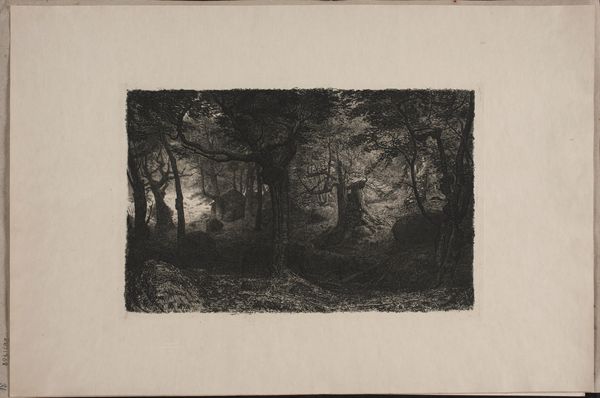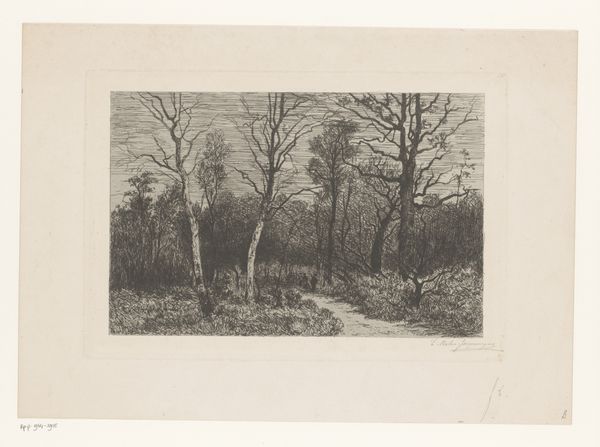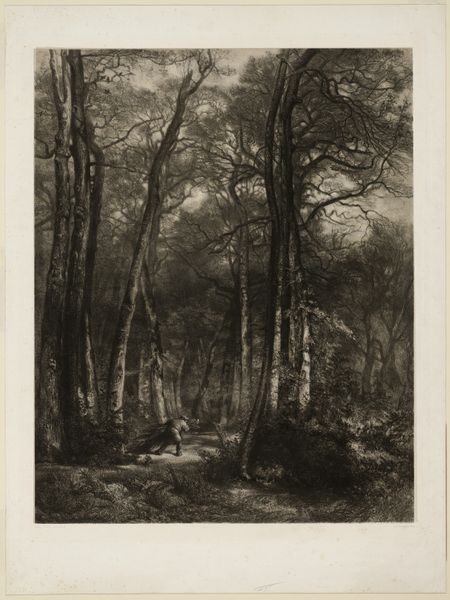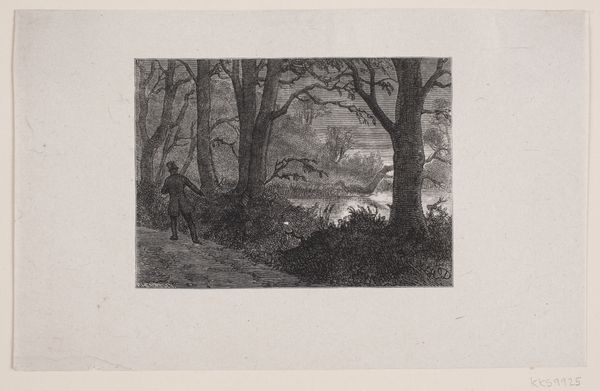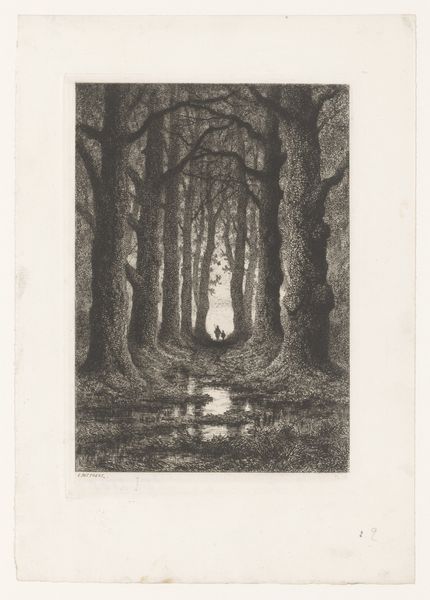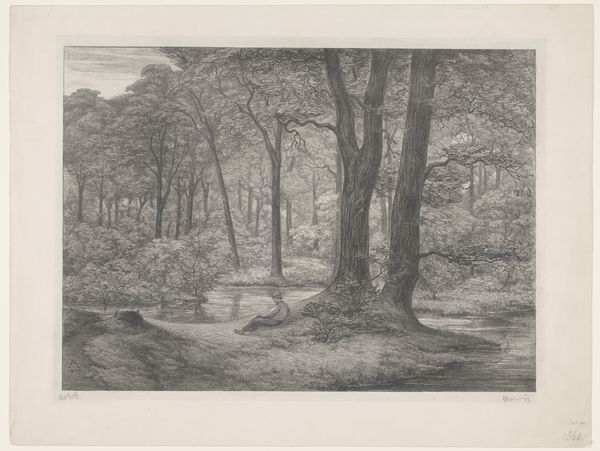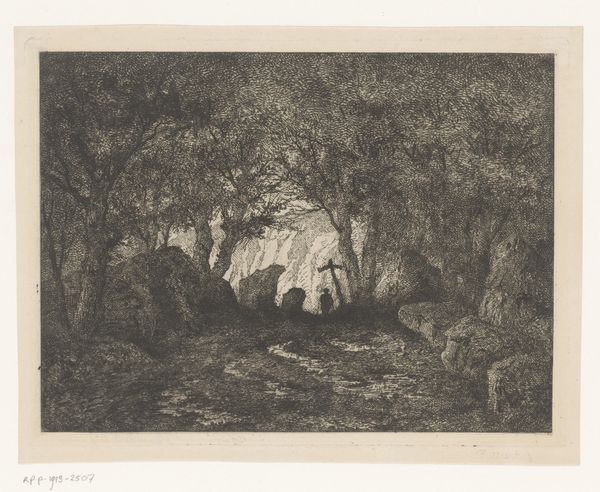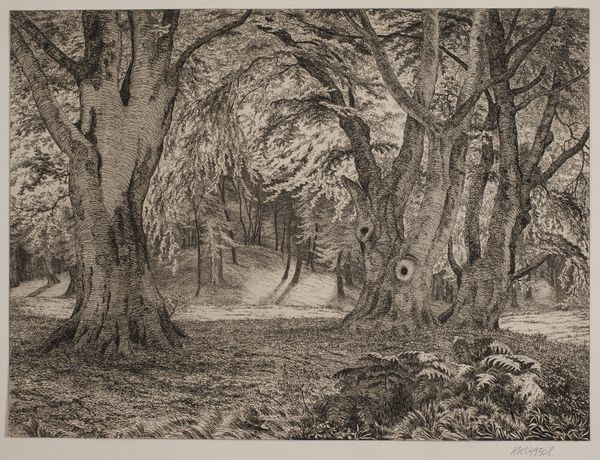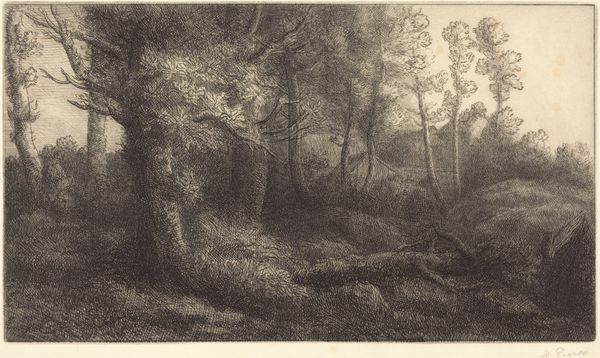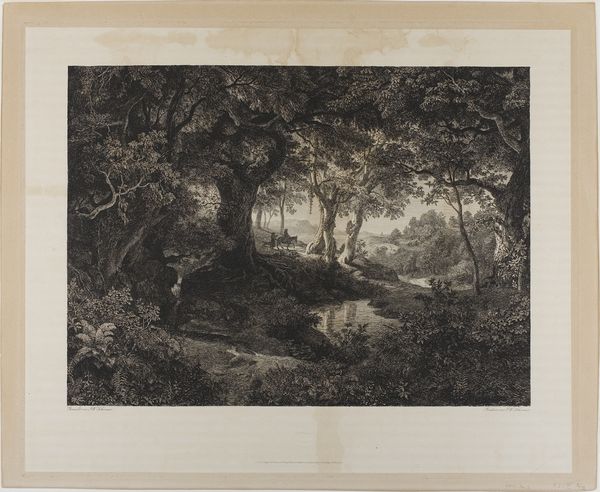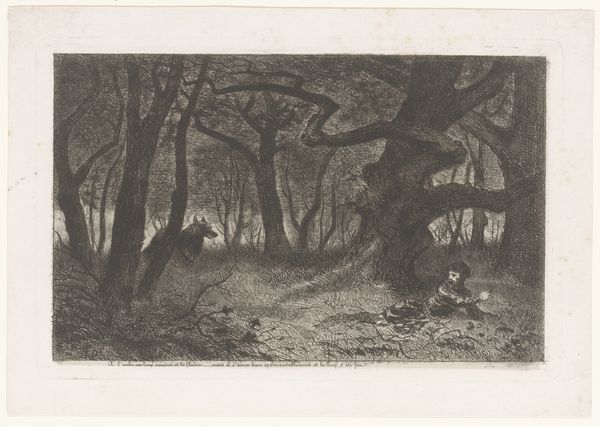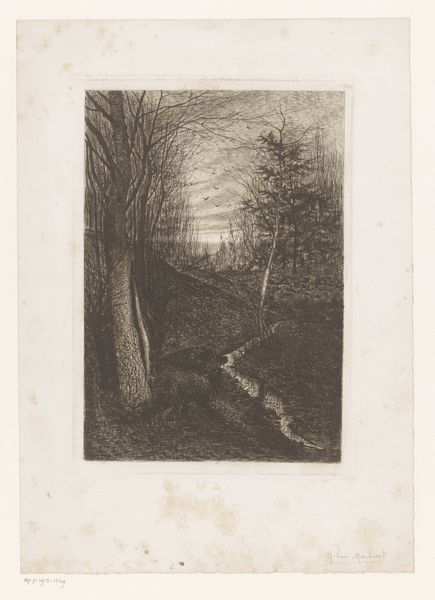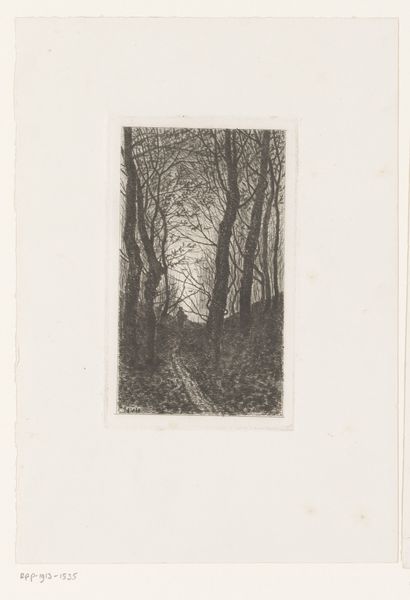
drawing, print, etching
#
drawing
# print
#
etching
#
landscape
#
symbolism
#
northern-renaissance
Dimensions: 208 mm (height) x 312 mm (width) (Plademål)
Editor: This etching, *Troldeskoven*, or "Troll Forest," by Niels Skovgaard, was made in 1893. It's pretty dark, and dense...makes me feel like I'm stepping into a fairytale. What do you see in this piece? Curator: I see a deliberate engagement with the symbolism of nature, and, as you suggest, fairytales. How might we consider this forest not just as a landscape, but as a stage for exploring ideas of national identity and cultural mythology? Editor: I guess I hadn't thought about it that way... it just seemed like a spooky forest! Is it more than that? Curator: Well, consider the period. Skovgaard created this during a time of rising nationalism across Europe. Forests often represented the soul of a nation, untouched and pure. Do you see elements that might symbolize something beyond just trees and rocks? Editor: Hmmm… those twisting trees almost look like figures, lurking in the shadows. And there's a light source – is that supposed to mean something? Curator: Precisely. Perhaps it signifies hope, or a hidden truth within the national spirit? Think about it in terms of reclaiming cultural narratives, asserting identity through symbolic landscapes. Also the contrast with the figures… are they gendered? Editor: Wow, I'm definitely seeing a lot more to it now! It's not just a dark forest; it's a statement about Danish identity. Curator: Exactly! By engaging with the historical and social context, we can peel back layers of meaning. And the use of black and white, might that also have symbolic value? Editor: Absolutely! I'll never look at a landscape the same way again. Thanks! Curator: And I will certainly ponder how "safe spaces" and exclusion function together.
Comments
No comments
Be the first to comment and join the conversation on the ultimate creative platform.
